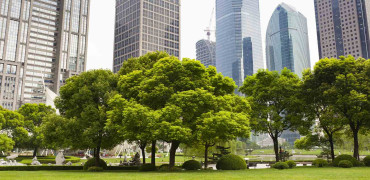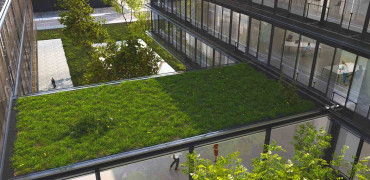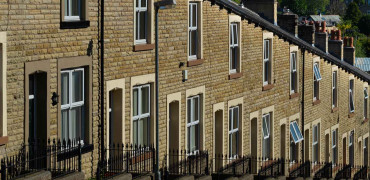Government policy may appear to change the way in which we construct but in addition, ultra-modern building materials are certainly playing their part.
If architects, specifiers and planners are becoming passive then surely the materials should too. As a minimum we should expect our construction materials to be environmentally friendly, durable and strong.
Maybe the revolution of modern materials science will stimulate the way we build rather than the Commons.
Some interesting materials to consider can be used for both decorative finishes and building structure. These include transparent wood, carbon fibre and ultra white paint.
When buildings coexist with our environment then our lives will be more sustainable
See-through wood
Why would scientists make transparent wood? Well, it is stronger than plastic and tougher than glass, imagine the possibilities of this in construction.
These new composites have up to 90% transparency, are significantly more biodegradable glass and of course plastic, and importantly are shatter proof!
The development of transparent wood remains in the lab at the moment, but the potential for energy efficiency is huge.
The potential for the construction industry is also huge. Transparent wood has the potential to transform the building industry with load bearing windows, energy savings, and ultimately efficiency.
Carbon fibre
We couldn’t discuss innovative material without including carbon fibre, this truly is a material of the future. Usually saved for sporting activities, carbon fibre is increasingly being used in construction.
Carbon fibre holds all the attributes needed to make it into the industry’s top ten. It is 75% lighter than iron, 30% lighter than aluminium and it can be used to reinforce traditional building materials.
Carbon fibre reinforcement of concrete also provides the thermal insulation that concrete just can't do. The only drawback - the cost.
Cooling paint
Passive house building has the potential to use 90% less energy than our traditional builds.
As we know, passive design relies on our natural resources but material innovation will propel this concept into the future.
For example, a new type of white paint has the potential to cool existing buildings and reduce the use of air conditioning. The paint is able to reflect 95.5% of sunlight and reduce temperatures by almost 2°C, cooling surfaces by 4.5°C below ambient temperature.
According to many studies the lighting, heating and cooling of our homes and buildings is responsible for a huge 28% of global CO2.
White painted houses and roofs have been used to cool buildings in hot climates for centuries; however, thus far only reflecting sunlight but still allowing the absorption of UV light which means the surface does not cool below ambient temperature.
However, the new technology in this paint can achieve this outcome and become commercially relevant.
Remarkable breakthroughs
Innovation has always led the way in building, but our futuristic drive motivated by the climate crisis is creating some truly remarkable breakthroughs. Think 3D-printing, self-healing concrete, and hempcrete.
Our pressing need to reduce our carbon footprint adds some guard rails. Think recycled steel, sheep wool insulation and earth-based construction. All of these products have special benefits that can transform our future.
By building with materials that have positive environmental effects our future will be more sustainable, when our buildings can coexist more peacefully with our environment then our lives will be more sustainable, and in turn more peaceful.
Here’s to innovation….
Kirsty Hammond is Publisher of Specifier Review




